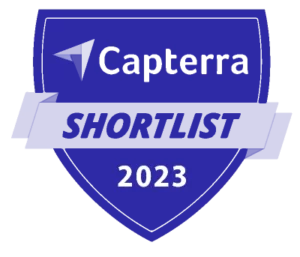Vacation rental managers need a payment solution that can handle everything from initial booking fees to security deposits. But with any vacation rental payment solution comes a whole host of considerations, like how to pay merchant account fees, manage currency conversions, and protect yourself against fraud.
In this guide, we’ll walk you through everything you need to know about vacation rental payments. We’ll look at the different methods you can use and what to consider when choosing a payment processor.
How does processing vacation rental payments work?
A vacation rental payment processor is a tool that allows vacation rental managers to process payments via debit and credit card from guests. These payment gateways are either hosted or integrated.
A hosted gateway takes your guests off your vacation rental website to a secure payment page, while an integrated gateway keeps your guests on your site throughout the entire booking process.
Some vacation rental payment processors also offer protection against fraud and scams, chargeback management, and merchant cash advance services to help you manage your cash flow.
For a guest, the payment process begins when they make a booking on your vacation rental website or through an online travel agency (OTA). They need to enter their payment information to confirm the booking. Then the payment processor will take care of the rest, from authorizing the payment to transferring the funds to your account.
Setting up a payment processor for your vacation rental business ensures that you can take payments quickly and easily without worrying about the details. You can automate many steps in the payment process, from sending out invoices to processing refunds.
Ways to collect vacation rental payments
Collecting payments via OTAs and direct bookings are all crucial components of vacation rental management. Here’s why.
1. Taking payments via OTAs (Online Travel Agencies)

If you list your vacation rental on OTAs like Airbnb, Vrbo, or Booking.com, you’ll need to set up a way to collect guest payments. Typically, the business model for OTAs is that they collect the guest’s payment and then direct the funds to the vacation rental owner or manager after deducting their commission. Each booking channel has its own policy on how you get paid, which can take a few days to process.
Most OTAs don’t allow you to take direct payments from guests, which causes delays in payments and can create a cash-flow problem for vacation rental managers. So having a processor for vacation rental payments in place for direct bookings is a huge advantage.
2. Collecting payments from direct bookings
With direct bookings, you have more control over the vacation rental payment process. You can choose which payment methods to offer and when to collect payments. For example, you might require a deposit at the time of booking and then the final balance 60 days before arrival.
Offering multiple payment options is also important for guests. And with a vacation rental payment processor, like PayPal, Stripe, or VacationRentPayment you can directly receive money from your guests without having to set up a merchant account.
Other types of vacation rental payments
Here are a few other types of payments you might need to collect:
1. Charging for additional services
Offering additional services can make your guests’ stay more enjoyable and add to your vacation rental business’s bottom line.
Some examples of additional services you might offer include:
- Pickup and drop off from the airport
- Grocery deliveries
- Mid-stay cleaning services
- Laundry services
- Luggage storage
Charging for additional services can be a great way to boost revenue for your vacation rental business. Here’s an example: Hostfully’s Digital Guidebooks is a browser-based platform that offers a marketplace where you can list and sell additional services. Your guests can purchase these services or products within the Marketplace without being redirected to another site.

2. Security deposits
A vacation rental security deposit is a charge you collect from guests to cover damages that might occur during their stay. The amount of the security deposit varies depending on factors like the type of vacation rental property, guest profile, and length of stay.
Security deposits are typically collected at the time of booking and held in a separate account until after the guest checks out. Then you can use the funds to cover any damages during the guest’s stay. If there are no damages, you’ll refund the security deposit to the guest.
With a vacation rental payment processor, you can automate the security deposit process by collecting the deposit at the time of booking and releasing the funds after checkout. That way, you don’t have to worry about manually processing security deposits.
Best vacation rental payment methods
The best payment method for you will depend on your business’s needs, your guests’ preferences, and the vacation rental market you operate in. Here are some of the most popular vacation rental payment methods:
1. PayPal

Once you create a business account on PayPal, you can send email invoices to your guests, and they can pay you directly with their PayPal account, credit card, or debit card. PayPal accepts over 100+ currencies, so it’s a good option if you have international guests.
However, PayPal charges transaction fees of 2.9% + $0.30 per transaction. So while it’s one of the most convenient and safest methods for both you and your guests, it’s not the cheapest. Hostfully’s property management system (PMS) integrates with PayPal, so you can easily collect payments online without having to set up a merchant account.
2. Stripe
Stripe offers invoice management and allows you to accept payments from direct bookings as well as major distribution channels like Airbnb, Vrbo, and Booking.com. So you can immediately accept credit card payments and boost revenue with Stripe. You can also collect additional charges like security deposits with Stripe. Your guests’ payment details are automatically stored in your Stripe profile, so you can charge them for future bookings with just a few clicks.
Hostfully also integrates with Stripe as it is a PCI Level 1 Service Provider, which makes it the safest payment processor. Your guests’ payment details are also encrypted and stored on Stripe’s servers and not shared with Hostfully.
3. VacationRentPayment
VacationRentPayment is specifically designed for vacation rental managers and owners. Similar to Stripe, VacationRentPayment is also a Level One PCI-compliant processor, so you can assure guests their payment information is safe and secure.
With VacationRentPayment, you can send a customized link to guests to pay their balance, and you can even set up automatic payments for future bookings. Hostfully’s integration with VacationRentPayment also gives you accurate reports on all your payments and allows you to manage multiple properties from one platform.
4. Processing credit card payments manually
The most common way to pay for a vacation rental is using a credit card. Anti-fraud measures have come a long way, and guests are now more comfortable using their credit cards to pay for vacation rentals online. It’s hard to manage if you’re manually processing credit card payments, though, as you’ll need to store your guests’ credit card information somewhere safe and secure. You’ll also need to remember to charge your guests’ credit cards before their stay. Additionally, processing fees (usually 2-3%) can eat into your profits.
Hostfully allows you to process credit card payments with our integrated payment processors like PayPal, Stripe, and VacationRentPayment, so you don’t need to worry about high processing fees.
5. Bank transfers
Bank transfers can be beneficial for owners as transfers are made in advance and offer a guarantee of payment. However, downsides like long waiting periods for the money to hit your account and room for error while manually entering account details make bank transfers a hassle. Requesting a bank transfer from your guest may also not be a practical solution, as guests could be reluctant to share their bank account details. It also means an additional step in the booking process for your guest, which is never ideal.
What to think about when collecting vacation rent payments
Processing refunds, integrations, automatic payments, and fraud prevention are all important factors to consider when setting up your vacation rental business’s payment system.
Here are some things to think about when collecting vacation rental payments:
1. Security
When guests are directed to a potentially unsecured webpage, they are more likely to abandon their booking.
Using a payment processor that is PCI Level 1 compliant is the best way to ensure that your guests’ payment information is safe and secure. PCI compliance is the gold standard for payment processing security.
2. Accounting
OTAs like Airbnb, Vrbo, and Booking.com have their own payment schedules. For example, on Airbnb and Vrbo, the host doesn’t receive the payment until 24 hours after the scheduled check-in.
So if a guest cancels within that time frame, the host doesn’t get paid. At the same time, if a guest schedules a check-in for next month, the host still has to wait for 24 hours after that check-in date to get paid. This kind of payment schedule can cause cash flow problems, especially if you have a lot of bookings.
When using a vacation rental payment processor, you can instantly receive payments from various sources. You also need to keep in mind how you will be tracking your cash flow.
Hostfully integrates with accounting software like Ximplifi and QuickBooks, so you can automatically sync your rental payments and expenses. This gives you an accurate picture of your business’s financial health.

3. Integrated third-party payment processing tools
Using a payment processor that integrates with your PMS will save you a lot of time and hassle. Choose one that automates the entire payment process. Hostfully’s vacation rental software integrates with a wide range of vacation rental and business tools to automate all your workflows.
4. Processing refunds
Refunding security deposits can be a repetitive and time-consuming task if you don’t have the right tools in place. When you process payments on Hostfully through Stripe, for example, you can easily automate the refund process. You can track this task within Hostfully and set a date for the refund to go out. You can also choose whether you wish to refund a partial amount or the full security deposit upfront.
5. You’re not tied to a specific payment gateway
When you use a payment processing tool, you’re not limited to a specific payment gateway. You can use the payment gateway that works best for your business. You can also change payment gateways anytime. Unlike manual payment processing, there’s no need to worry about losing your payment information if you change gateways.
Manual payment processing vs. payment processing tools
As your business grows, manual payment processes like bank transfers and credit card payments become time-consuming and costly. And collecting cash or checks is complicated and fraught with risk.
Here’s why.
1. Manually processing credit card payments is a time sink
To do this, you need to set up a merchant account and implement a point of sale (or a portal on your property’s site) for guests to make payments. Then, you have to manage delivery of the product or service manually.
2. Checks are a logistical nightmare
Checks are largely a thing of the past. When they are used, however, you run the risk of a guest giving one without sufficient funds to cover it—because they assume it’ll never be cashed. Plus, sending and returning checks by post is a pain for both of you.
3. Bank transfers limit your payment options
Bank transfers are feasible but come with drawbacks—not least the fact that you and your guest need to trust each other. They can also take days to process, which is problematic for cash flow. Bank fees can also be high, especially if you’re sending money internationally. Some banks also limit how much you can process at a time and how often. And finally, there’s the risk of human error when inputting payment details.
4. Cash payments are unsafe and insecure
Accepting cash as a payment method is always risky. Most people also don’t want to travel with lots of cash these days, but withdrawals at their destination can involve costly fees. Plus, keeping spare change on hand is a hassle for you and having a lot of cash lying around is a security risk.
5. Risk of fraud
When you process payments manually, there is always a risk of fraud. Identity theft is a major problem with credit card payments and frauds like chargebacks are costly and time-consuming to deal with. Most payment processing tools have built-in fraud protection, so you can rest assured that your payments are safe and secure.
6. You’re tied to limited currencies
If you only process payments manually, you’re limited to the countries and currencies you can accept. This is a major problem if you want to expand your business internationally. With a vacation rental payment processor, however, you can easily accept payments in multiple currencies, making it easy to do business with travelers from all over the world.
7. Missed or late payments
With an automated vacation rental payment processor, you can set up recurring payments so that you never have to worry about missed or late payments again. This is especially helpful if you have a lot of bookings, as it can be difficult to keep track of all the different payment schedules and your cash flow.
8. Hard to track all your payments in one place
When everything is manual, it’s hard to keep track of all your income and expenses. With a vacation rental payment processor, all your payments are processed and tracked in one place. This makes it much easier to manage your finances and see where your business is making or losing money.
How to set up automatic payment processing
The easiest way to set up automatic payment processing is to use vacation rental software that integrates with a payment processor. Hostfully’s software integrates with Stripe and PayPal, so you can easily set up recurring payments.
Here’s how you can do it:
1. Set up an account on Stripe or PayPal
If you don’t have a Stripe or PayPal Business account, you can easily create one. Simply enter your personal information, like your name, email, and address. And then, enter your bank account details so that the payment processor you choose can send your payments.
2. Integrate Stripe or PayPal into your PMS
The next step is to integrate Stripe or PayPal into your property management system. Hostfully’s software makes it easy to do this by turning on the toggle from Hostfully’s integrations page. If you’ve not created a Stripe or PayPal account in the first step, Hostfully’s integration page will automatically redirect you to create an account.

3. Set up Airbnb and Vrbo accounts
Airbnb handles payments with its built-in system. You can simply enter your bank account or PayPal account information on your Airbnb profile, and Airbnb will send your payments there. Vrbo, on the other hand, accepts Stripe. So you can easily add your Stripe account details on your Vrbo profile, and Vrbo will send your payments to your Stripe account.
4. Integrate your listing channels with your PMS
Now that you have your payment processor set up, it’s time to integrate your listing channels with your PMS. Hostfully integrates with all major listing channels like Airbnb, Vrbo, and Booking.com. This way, all your bookings are automatically synced to Hostfully and you can easily process payments.

5. Collect payments and upsells
Now that your Stripe account is integrated with Hostfully, you can easily collect payments for direct bookings, upsells, and add-ons.
Choosing the right payment processor: the key to a successful business
With so many factors to consider, choosing the right payment processor for your vacation rental business can be a daunting task. But making the right choice is vital for your business.
With the right vacation rental payment processor, you can automate your payments and reduce the risk of fraud. You can also track all your payments in one place.
Hostfully’s vacation rental software integrates with PCI-compliant vacation rental payment processors like Stripe, PayPal, and VacationRentPayment. So you can easily collect payments, manage bookings, and automate workflows across your OTA listings, direct booking site, and upsells.








